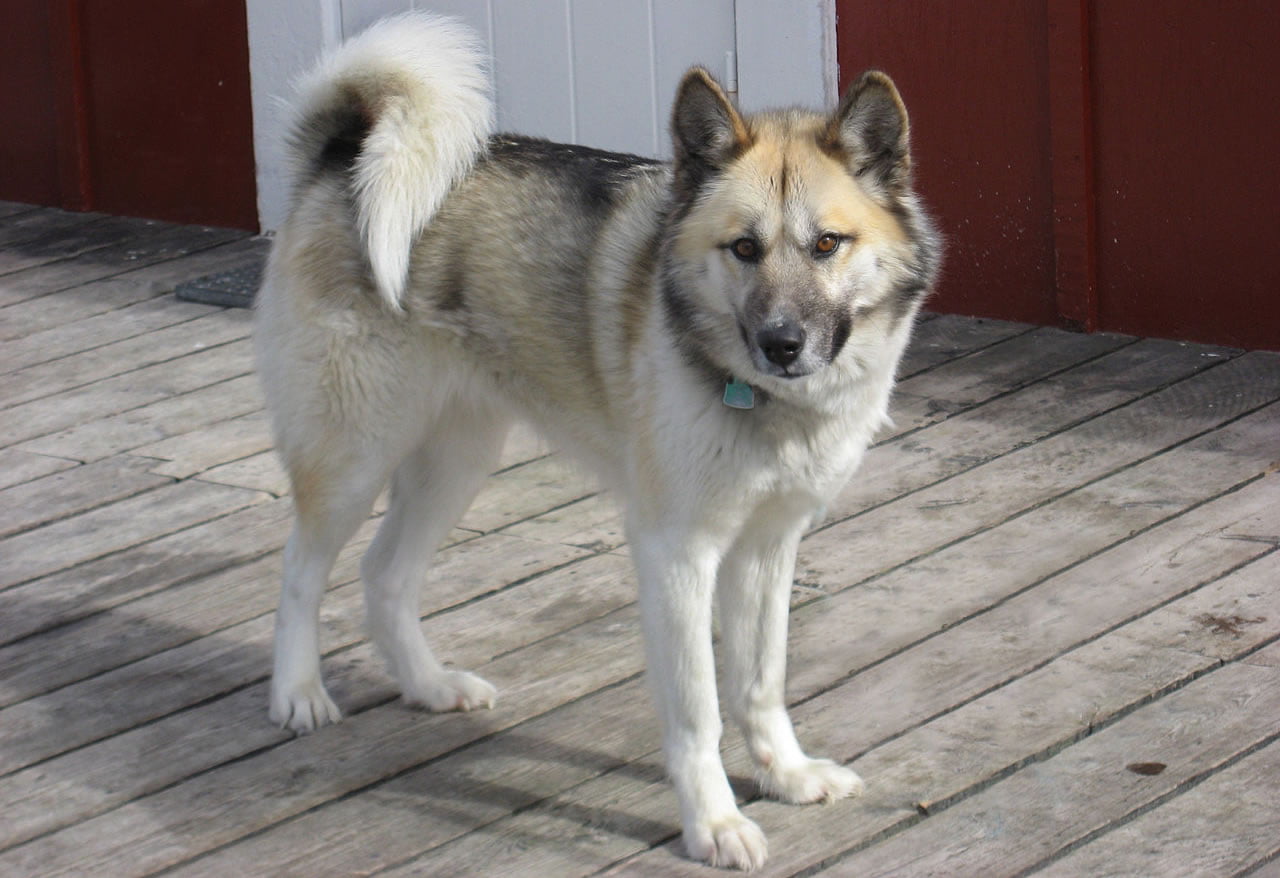Are you considering getting a Greenland Dog as your next pet? If so, you are in for a unique and rewarding experience. These magnificent dogs are known for their strength, endurance, and hardworking nature. They were originally bred for hunting and sled pulling in the harsh Arctic environment, and their traits make them excellent companions for outdoor enthusiasts who love to hike, camp, and explore. However, before making the decision to bring a Greenland Dog into your home, it’s important to understand their characteristics, needs, and temperament to ensure that they are a good fit for your lifestyle and living situation.
Breed Category: Working
Country of Origin: Greenland
Average Size:60-70 cm
Average Weight:30-40 kg
Average Life Span: 10-12 years
Grooming Requirements: Moderate
Exercise Requirements:High
History and Origin
The Greenland Dog, also known as the Greenland Husky, is a breed of dog that originated in Greenland. These dogs were originally bred by the Inuit people of Greenland for hunting and transportation purposes. They are a hardy and resilient breed that can withstand the harsh Arctic climate and terrain.
The history of the Greenland Dog can be traced back to the 9th century when the Vikings first arrived in Greenland. The Vikings brought with them their own dogs, which were then bred with the local Inuit dogs. Over time, the breed evolved into what is now known as the Greenland Dog.
The Greenland Dog was primarily used for hunting and transportation by the Inuit people. They were used to hunt seals, polar bears, and other Arctic animals. They were also used to pull sleds across the snow and ice. The dogs were highly valued by the Inuit people and were often treated as members of the family.
In the early 20th century, the Greenland Dog was introduced to Europe. The breed quickly gained popularity among dog enthusiasts and was used in various expeditions to the Arctic. The dogs were also used in World War II by the British Army in Greenland.
Today, the Greenland Dog is still used for hunting and transportation in Greenland. However, the breed is also kept as a companion dog in other parts of the world. The breed is recognized by the Kennel Club in the UK and is classified as a working breed.
The Greenland Dog is a large and powerful breed. They have a thick coat that is designed to keep them warm in the Arctic climate. The coat can be either black, white, or a combination of both. The breed is known for its endurance and strength, which makes them ideal for pulling sleds across long distances.
In conclusion, the Greenland Dog is a breed that has a rich history and a strong connection to the Inuit people of Greenland. They are a hardy and resilient breed that can withstand the harsh Arctic climate and terrain. The breed has gained popularity in Europe and is recognized by the Kennel Club in the UK. The Greenland Dog is a breed that is highly valued for its strength, endurance, and loyalty.
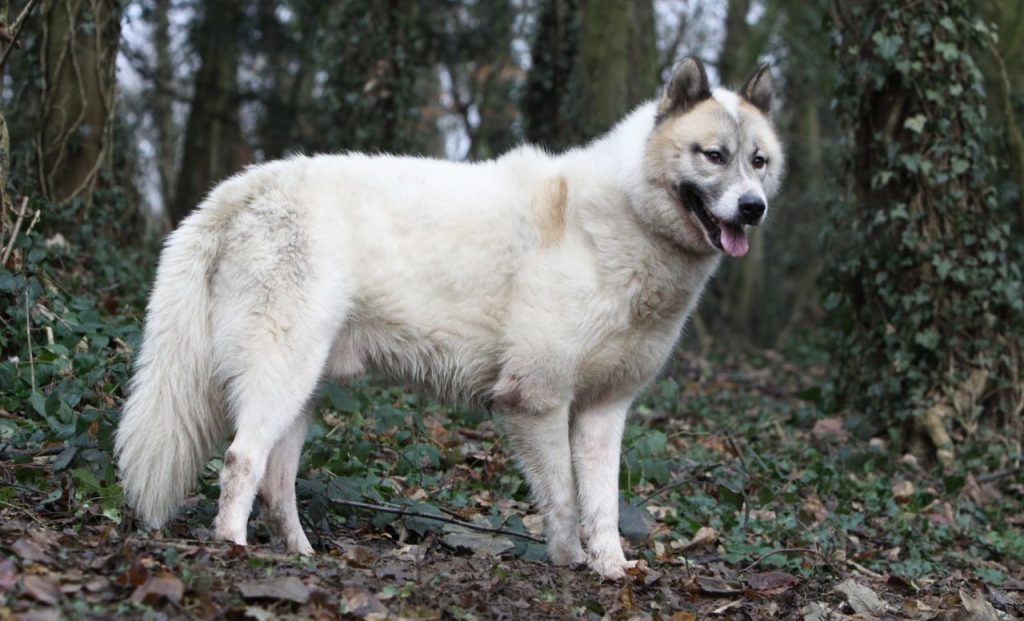
Size and Breed Category
The Greenland Dog is a large breed of dog that originated in Greenland. They are known for their strength and endurance, which makes them ideal for pulling sleds and working in harsh environments. These dogs have a thick double coat that protects them from the cold, and they come in a variety of colors including black, white, and grey. They have a broad head with a strong jaw and powerful neck, which allows them to pull heavy loads. Their ears are erect and pointed, and their eyes are usually brown. Greenland Dogs are typically between 58-68 cm in height and weigh between 30-40 kg.
The Greenland Dog is classified as a working breed, which means they are bred for a specific purpose. They are often used for sled pulling, hunting, and as a general working dog. They are known for their loyalty and intelligence, which makes them easy to train. However, they can be stubborn at times, so it’s important to establish yourself as the pack leader early on. Greenland Dogs are also known for their independence, which means they can be left alone for long periods of time without becoming anxious or destructive. Overall, the Greenland Dog is a hardworking and loyal breed that is well-suited for life in harsh environments.

Fur Length and Colour
The fur of the Greenland Dog is thick and dense, providing excellent insulation against the harsh Arctic climate. The fur is typically medium to long in length, with a coarse outer layer and a soft undercoat. The fur can be a range of colours, including black, white, grey, and brown. Some dogs may have a combination of these colours, with a darker back and lighter belly. The fur may also have a slight wave or curl to it, adding to the dog’s rugged appearance. Overall, the fur of the Greenland Dog is an essential feature that allows them to thrive in their native environment.
The colour of the fur of the Greenland Dog can vary depending on the individual dog and its lineage. Some dogs may have a solid colour, while others may have a mix of colours. The most common colours are black and white, with some dogs having a black mask on their face. Other dogs may have a grey or brown coat, with variations in shade and pattern. The colour of the fur can also change with age, with some dogs becoming lighter or darker as they mature. Regardless of the colour, the fur of the Greenland Dog is an important adaptation that allows them to survive in the harsh Arctic climate.
Termperament and Trainability
Greenland Dogs are known for their independent and strong-willed temperament. They were originally bred to pull sleds and hunt, which has resulted in a breed that is highly self-sufficient and capable of making decisions on their own. This can make them challenging to train, as they may not always be willing to follow commands or listen to their owner. However, with patience and consistency, they can be trained to be obedient and well-behaved. It is important to establish a strong leadership role with a Greenland Dog, as they may try to assert dominance if they feel their owner is not in control. Overall, the temperament of a Greenland Dog requires an experienced and confident owner who is willing to put in the time and effort to properly train and socialize them.
In terms of trainability, Greenland Dogs are highly intelligent and have a strong work ethic. They excel in activities such as sledding, skijoring, and weight pulling. They are also known for their endurance and ability to work in harsh weather conditions. However, their independent nature can make them less interested in traditional obedience training. Positive reinforcement techniques, such as using treats and praise, can be effective in motivating a Greenland Dog to learn new commands. It is important to keep training sessions short and engaging, as they may become bored or distracted easily. Overall, the trainability of a Greenland Dog requires a patient and creative approach to training, as well as a willingness to work with their natural instincts and abilities.
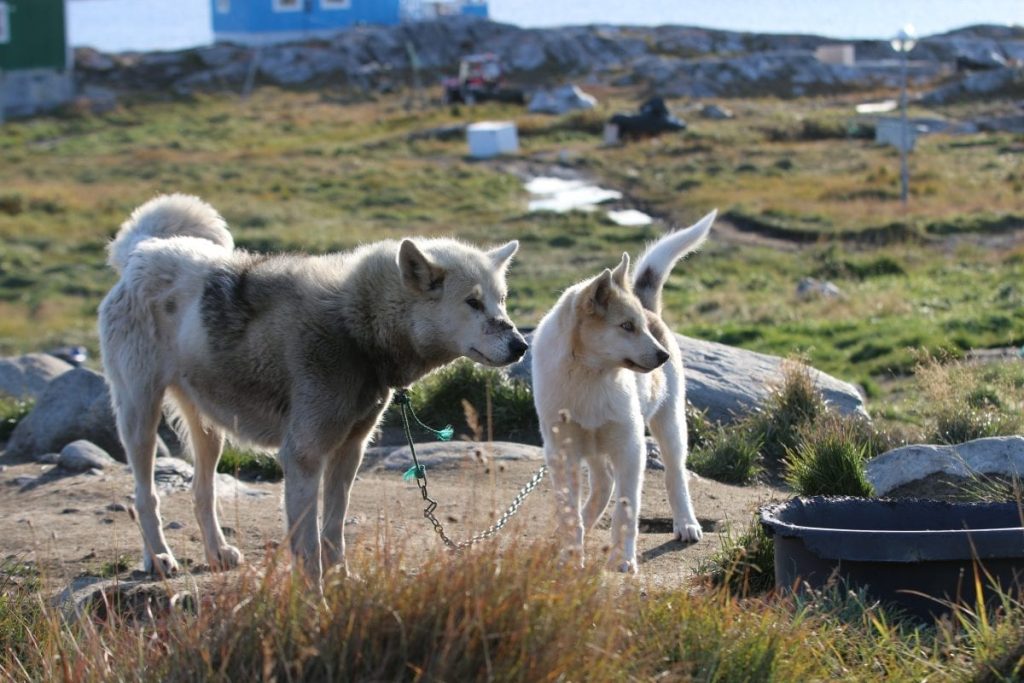
Known Health Conditions
The Greenland Dog is a breed that is known to be prone to certain health conditions. One of the most common issues that these dogs face is hip dysplasia. This is a condition where the hip joint does not develop properly, leading to pain and discomfort for the dog. It can also cause arthritis and mobility issues later in life. To prevent this condition, it is important to ensure that the dog’s parents have been screened for hip dysplasia before breeding. Additionally, maintaining a healthy weight and providing regular exercise can help to reduce the risk of hip dysplasia in this breed.
Another health condition that is common in Greenland Dogs is progressive retinal atrophy. This is a degenerative eye disease that can lead to blindness. It is caused by the gradual deterioration of the retina, which is the part of the eye that detects light. There is no cure for progressive retinal atrophy, but early detection can help to slow the progression of the disease. Regular eye exams are important for all Greenland Dogs, but especially for those with a family history of progressive retinal atrophy.
Openness to Strangers
Greenland Dogs, also known as Greenland Huskies, are a highly sociable breed of canine that are known for their openness to strangers. These dogs are typically very friendly and outgoing, and they tend to be very welcoming to new people that they meet. They are also very loyal and protective of their owners, and they will often go out of their way to make sure that their owners are safe and secure. Despite their size and strength, Greenland Dogs are very gentle and affectionate, and they are often used as therapy dogs in hospitals and nursing homes.
One of the key characteristics of the Greenland Dog is their intelligence and adaptability. These dogs are very quick learners, and they are able to adapt to new situations and environments very easily. They are also very curious and inquisitive, and they love to explore new places and meet new people. This makes them ideal pets for families with children, as they are very patient and gentle with young kids. Additionally, Greenland Dogs are very active and energetic, and they require plenty of exercise and playtime to stay healthy and happy. They are excellent companions for people who enjoy outdoor activities such as hiking, camping, and running.
Playfulness Level
The Greenland Dog is a highly energetic and playful breed that loves to run and play. They are known for their love of the outdoors and their ability to thrive in cold weather conditions. These dogs are often used for sledding and other outdoor activities, and they have a natural instinct to pull and run. They are also very social animals and enjoy spending time with their owners and other dogs. The Playfulness Level of the Greenland Dog is high, and they require plenty of exercise and playtime to stay happy and healthy.
One of the most notable characteristics of the Greenland Dog is their sense of humor and playfulness. They are known for their silly antics and their ability to make their owners laugh. These dogs are also very intelligent and enjoy learning new tricks and games. They are highly trainable and respond well to positive reinforcement. The Playfulness Level of the Greenland Dog makes them a great choice for families with children or active individuals who enjoy spending time outdoors. With their high energy levels and love of play, these dogs are sure to bring joy and laughter to any household.
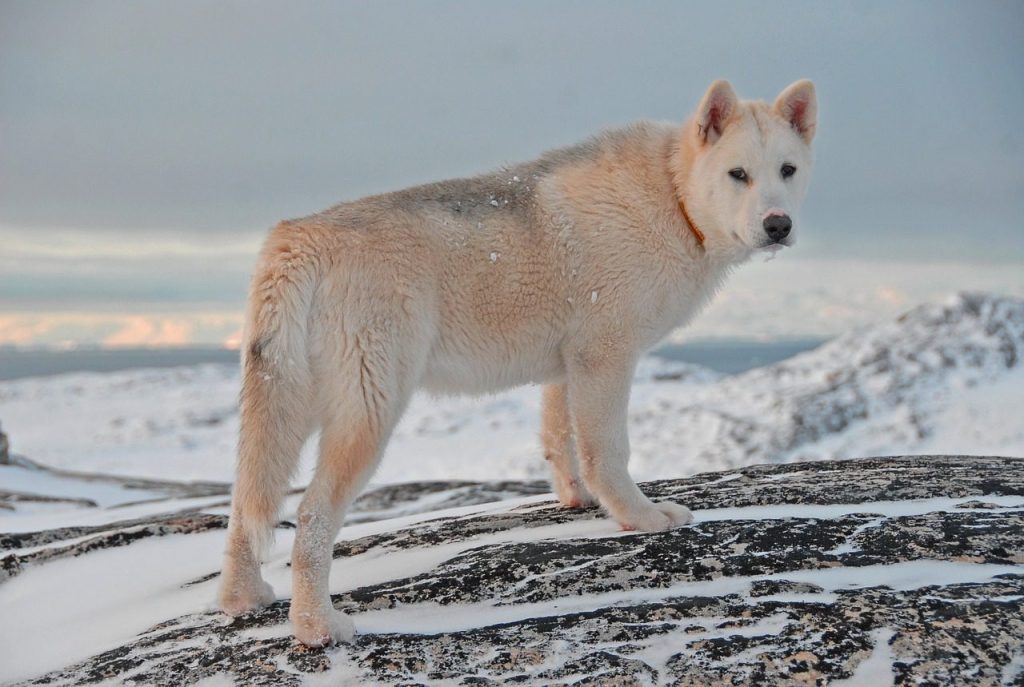
Suitability as a Pet for Children
Greenland Dogs have a strong and independent nature, which can make them a challenging pet for children. They are highly energetic and require plenty of exercise and mental stimulation to keep them happy and healthy. Their thick fur coat means they are well-suited to colder climates, but they may struggle in warmer weather. Greenland Dogs are known for their loyalty and affection towards their owners, but they can be wary of strangers and may require socialisation from a young age. Overall, the Greenland Dog can make a great pet for the right family who are willing to put in the time and effort to meet their needs.
Exercise Needs
Greenland Dogs are highly active and energetic dogs that require a lot of exercise to stay healthy and happy. They are a breed that was originally developed for pulling sleds across long distances, so they have a lot of stamina and endurance. As such, they need to be given plenty of opportunities to run, play, and explore. A daily walk is not enough for these dogs, and they will benefit from activities such as hiking, running, and swimming. It is important to note that they should not be exercised in hot weather, as they are better suited to colder climates.
In addition to physical exercise, Greenland Dogs also require mental stimulation to prevent boredom and destructive behavior. They are intelligent dogs that enjoy learning new things, so training sessions and interactive toys can be a great way to keep them mentally engaged. It is also important to provide them with plenty of socialization opportunities, as they can be wary of strangers and other dogs if not properly socialized. Overall, the exercise needs of the Greenland Dog are high, and they require an active and dedicated owner who can provide them with the physical and mental stimulation they need to thrive.
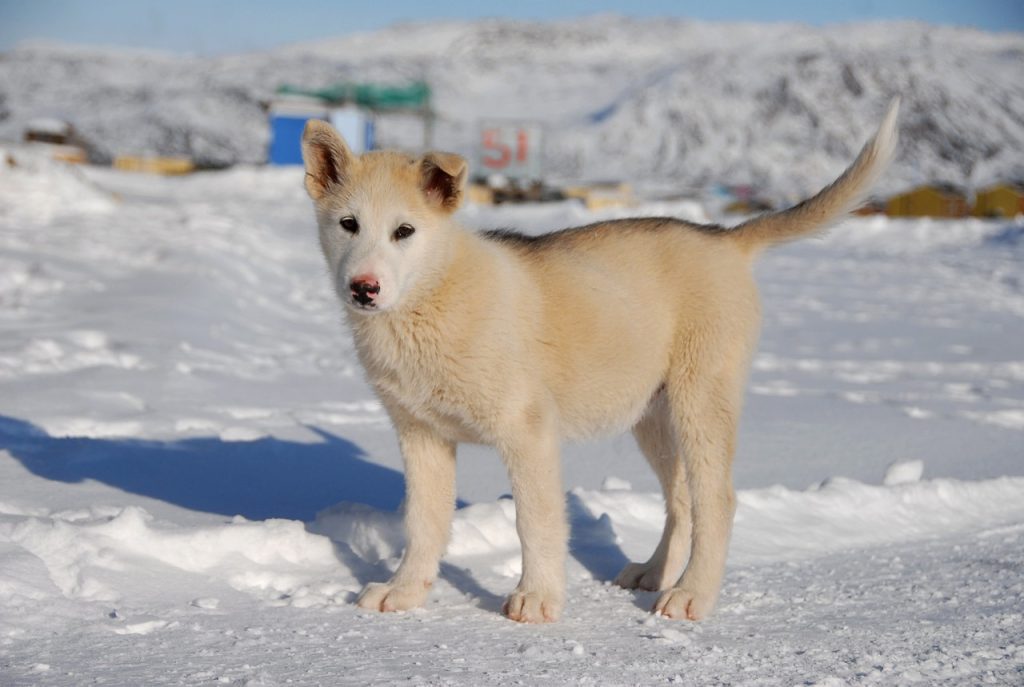
Suitability for a Multi-Pet Family
Greenland Dogs have been known to coexist peacefully with other animals in the household, including cats and other dogs. However, it is important to note that each dog has its own unique personality and temperament, and some may not get along with certain animals. It is recommended to introduce new pets slowly and under supervision to ensure a smooth transition. Additionally, proper training and socialization can also play a significant role in how well a Greenland Dog interacts with other pets.
Housing Requirements
Greenland Dogs require a spacious and secure living environment that can accommodate their active and independent nature. They need a minimum of 10 square meters of outdoor space per dog, with a high fence that is at least 1.8 meters tall to prevent them from escaping. The kennel should be well-insulated and have a raised floor to keep them warm and dry in cold and wet weather. It should also have a shaded area to protect them from the sun during hot weather. Additionally, they need access to fresh water and a comfortable bed to rest on.
Indoors, Greenland Dogs need a comfortable and quiet space to rest and sleep. They prefer a cool and well-ventilated area, away from direct sunlight and drafts. They require a bed that is large enough to accommodate their size and weight, with a soft and supportive mattress. They also need access to fresh water and a feeding area that is separate from their sleeping area. It is important to keep their living space clean and free from clutter to prevent accidents and injuries.
Summary
Greenland Dogs have historically been used for sledding and hunting in the Arctic regions. Due to their working background, they require a lot of exercise and mental stimulation to be happy and healthy. They are not recommended as pets for those who live in small homes or apartments, as they need plenty of space to run and play. Additionally, they have a strong prey drive and may not be suitable for households with small pets. Overall, the Greenland Dog is a high-energy breed that requires an experienced owner who can provide them with the exercise and training they need.
Greenland Dog FAQS
Greenland Dogs are intelligent and can be trained, but they have a strong independent streak and can be stubborn. Consistent and patient training is necessary.
Greenland Dogs are protective of their family and can make good guard dogs. However, they are not aggressive by nature and require socialization to prevent any unwanted behavior.
Yes, Greenland Dogs are known to be good with children. However, they should always be supervised when around young children.
Greenland Dogs are not well-suited for apartment living as they require a lot of space and exercise. They are best suited for homes with a large yard or in rural areas.
Greenland Dogs are generally healthy, but they can be prone to hip dysplasia and eye problems. Regular vet check-ups are important.
Yes, Greenland Dogs shed a lot, especially during shedding season. Regular grooming is necessary to keep their coat healthy.
Greenland Dogs have a lifespan of 10-14 years on average. Proper care and regular vet check-ups can help ensure a long and healthy life.
Greenland Dogs are highly active and require at least 2 hours of exercise per day. They enjoy activities such as hiking, running, and playing fetch.
A Greenland Dog can grow up to 60-70 cm in height.
The average weight of a Greenland Dog is between 30-40 kg.
